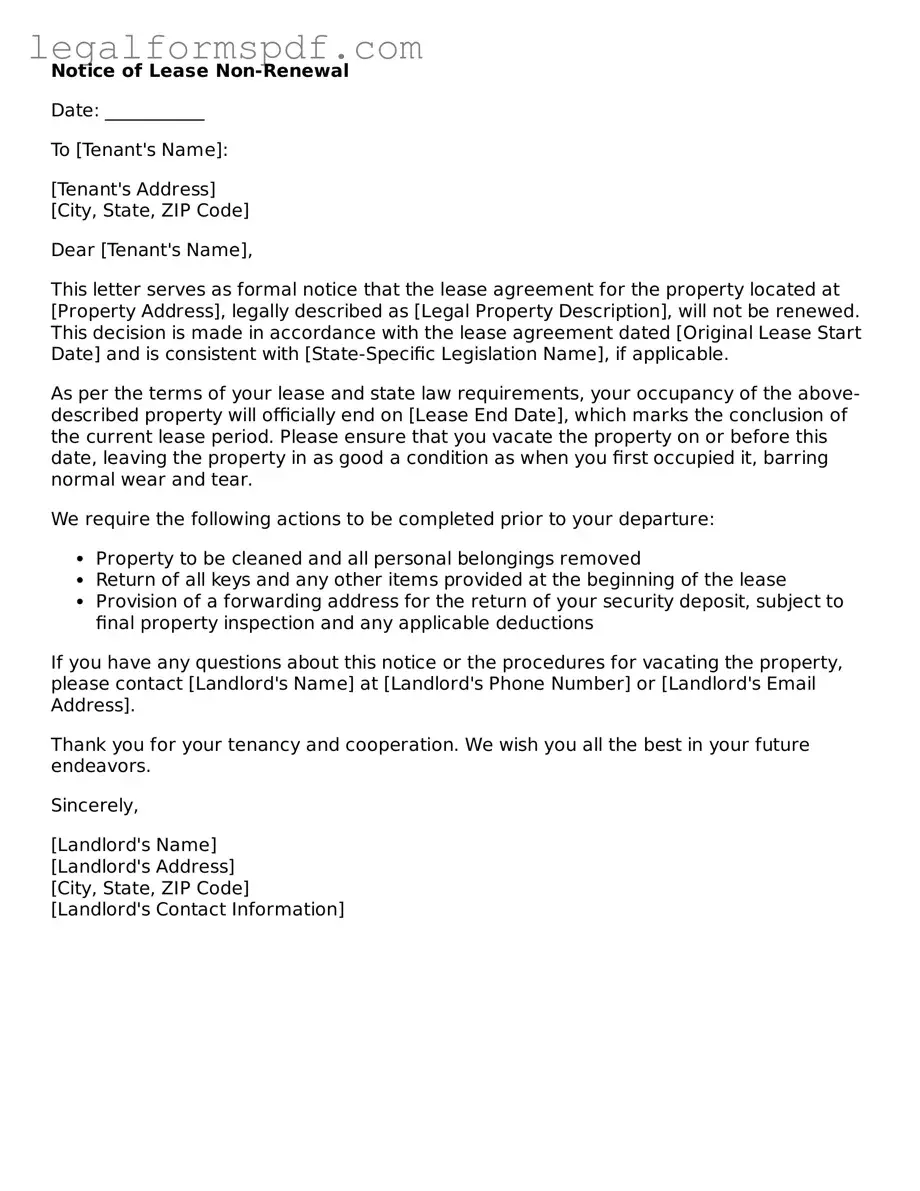What is a Notice of Lease Non-Renewal?
A Notice of Lease Non-Renewal is a document that either the landlord or tenant uses to inform the other party that they do not intend to renew the lease agreement once the current lease expires.
Why is sending a Notice of Lease Non-Renewal important?
Sending a Notice of Lease Non-Renewal is important because it formally communicates the decision not to renew the lease, allowing both parties to make other arrangements. It helps avoid misunderstandings and provides a clear end date for the lease agreement.
When should I send a Notice of Lease Non-Renewal?
The timing for sending a Notice of Lease Non-Renewal depends on the terms of your lease agreement. Typically, it should be sent 30 to 60 days before the lease ends. However, it's crucial to check your lease to follow any specified requirements.
Who should send a Notice of Lease Non-Renewal?
Either the landlord or the tenant can send a Notice of Lease Non-Renewal, depending on who decides not to renew the lease.
What information should be included in a Notice of Lease Non-Renewal?
The Notice of Lease Non-Renewal should include the date, the names of the landlord and tenant, the property address, and the lease end date. It should clearly state that the lease will not be renewed and mention any required actions or conditions.
Do I need to give a reason for not renewing the lease in the notice?
No, you are not required to provide a reason for not renewing the lease in the notice. However, you may choose to do so if you wish.
How should I send the Notice of Lease Non-Renewal?
It's best to send the Notice of Lease Non-Renewal in a way that provides proof of delivery, such as certified mail, registered mail, or by delivering it in person and getting a receipt. This ensures that there is a record of the notice being sent and received.
What happens if I don't send a Notice of Lease Non-Renewal?
If you do not send a Notice of Lease Non-Renewal within the required time frame, the lease may automatically renew according to its terms, or you may be held responsible for finding a replacement tenant or paying rent after the lease expires. It's essential to send the notice on time to avoid any unwanted obligations.
